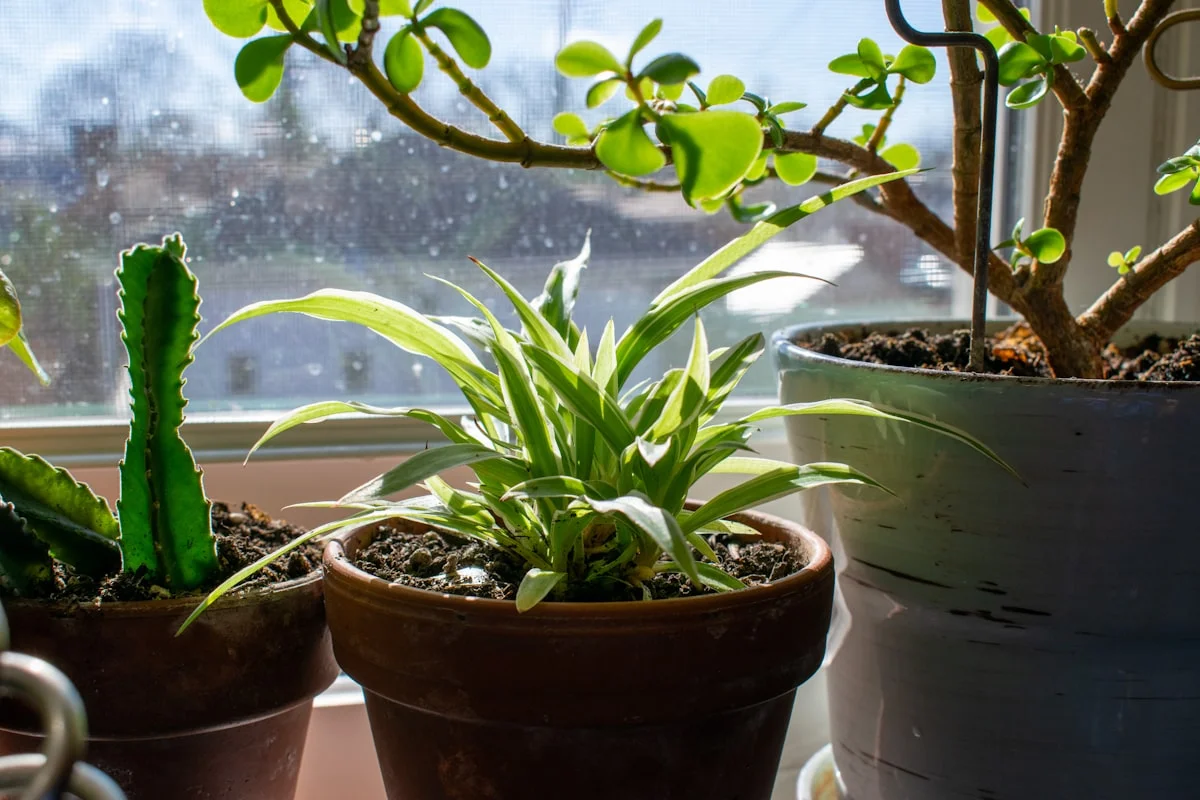How to Grow Succulents Indoors Without Sunlight: US Guide (2025)
If you love succulents but lack natural sunlight in your home, don’t worry—you can still grow succulents indoors successfully with the right techniques. Many people assume succulents need direct sunlight to thrive, but with proper care, artificial lighting, and smart plant choices, you can cultivate a lush indoor succulent garden even in low-light conditions. This guide will walk you through everything you need to know to grow succulents indoors without sunlight, ensuring your plants stay healthy and vibrant year-round.
Understanding Succulent Light Requirements
Succulents are known for their ability to store water in their leaves, stems, or roots, making them resilient in dry conditions. However, light is still essential for photosynthesis, the process that keeps them alive. While most succulents prefer bright, indirect sunlight, some varieties can adapt to lower light levels. The key to successfully grow succulents indoors without sunlight is selecting the right species and supplementing with artificial light when necessary.
Best Low-Light Succulents for Indoor Growth
Not all succulents require intense sunlight. Some species naturally thrive in shaded environments, making them ideal for indoor cultivation. Snake plants (Sansevieria), Zebra plants (Haworthia), and Gasteria are excellent choices because they tolerate lower light levels better than others. These varieties have adapted to survive under tree canopies or rocky overhangs in their natural habitats, meaning they can handle the dimmer conditions of an indoor space without direct sunlight.
Using Artificial Light to Grow Succulents Indoors
If your home lacks sufficient natural light, artificial grow lights can be a game-changer. LED grow lights are the most energy-efficient option, providing the full spectrum of light that succulents need without overheating them. Position the lights 6-12 inches above the plants and keep them on for 12-14 hours daily to mimic natural daylight. Fluorescent lights, especially T5 or T8 bulbs, are another affordable alternative that works well for indoor succulent growth.
Proper Watering Techniques for Indoor Succulents
One of the biggest mistakes when trying to grow succulents indoors is overwatering. Without strong sunlight, soil takes longer to dry out, increasing the risk of root rot. Water your succulents only when the soil is completely dry, typically every 2-3 weeks. Use a well-draining potting mix and containers with drainage holes to prevent excess moisture retention. A moisture meter can help you determine when it’s time to water, ensuring your plants stay healthy.
Choosing the Right Soil and Containers
Succulents need fast-draining soil to prevent waterlogged roots. A mix of cactus potting soil with added perlite or pumice improves drainage and aeration. Avoid using regular garden soil, as it retains too much moisture. When selecting containers, opt for unglazed terracotta pots, which allow excess water to evaporate. Ensure each pot has drainage holes to further reduce the risk of overwatering, especially in low-light indoor environments.
Maintaining Ideal Temperature and Humidity
Most succulents prefer temperatures between 60-80°F, which aligns well with typical indoor conditions. However, avoid placing them near drafty windows or heating vents, as sudden temperature fluctuations can stress the plants. Humidity is another factor—while succulents thrive in dry air, excessively humid environments can promote fungal growth. If your home is very humid, consider using a dehumidifier or increasing air circulation around your plants.
Fertilizing Indoor Succulents for Optimal Growth
Since indoor succulents grow slower than those in full sunlight, they require less frequent fertilization. Use a balanced, water-soluble fertilizer diluted to half strength, applied once every 4-6 weeks during the growing season (spring and summer). Avoid fertilizing in fall and winter when succulents enter dormancy. Over-fertilizing can lead to weak, leggy growth, so moderation is key to keeping your plants compact and healthy.
Preventing Common Problems When Growing Succulents Indoors
Even with the best care, indoor succulents can face issues like etiolation (stretching due to low light), pests, or rot. If your succulents start stretching, move them closer to a light source or increase artificial light duration. Mealybugs and spider mites can be treated with neem oil or insecticidal soap. Always inspect new plants before introducing them to your collection to prevent pest infestations. Proper airflow and avoiding overcrowding also help keep diseases at bay.
Rotating and Pruning for Even Growth
To ensure your succulents grow evenly, rotate them every few weeks so all sides receive equal light exposure. If some plants become leggy, you can prune them back and propagate the cuttings. Simply let the cuttings dry for a few days before planting them in fresh soil. This not only maintains your plant’s shape but also allows you to expand your indoor succulent collection without additional purchases.
Final Tips to Successfully Grow Succulents Indoors
Growing succulents indoors without sunlight is entirely possible with the right approach. Choose low-light tolerant varieties, invest in quality grow lights, and practice careful watering to keep your plants thriving. Monitor your succulents regularly for signs of stress and adjust their care as needed. With patience and attention, you can enjoy a beautiful, low-maintenance indoor succulent garden in 2025 and beyond.

